In today’s busy routines, our bodies crave movement that refreshes the mind as much as the muscles. Vinyasa yoga answers that need with breath-guided flow, linking each pose in a smooth rhythm that builds strength, flexibility, and calm focus. Whether you’re stepping on the mat for the first time or deepening your practice, the benefits of Vinyasa yoga reach far beyond fitness and extend into daily balance and clarity.
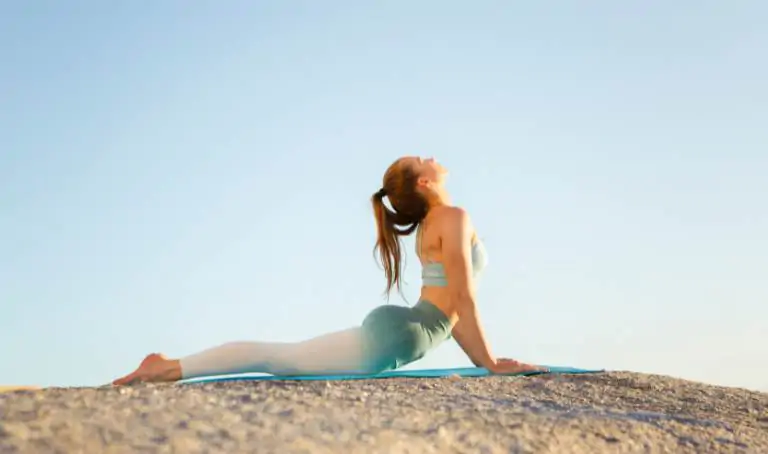
What is Vinyasa Yoga?
Vinyasa (often called flow yoga) links poses in smooth, continuous sequences guided by the breath. Unlike Hatha classes (where poses are held with pauses between them), Vinyasa emphasizes transitions, rhythm, and adaptability. Teachers vary pace and sequencing, so classes can range from slow flow to power-oriented.
Good to know: If you’re brand new, a few slower Hatha sessions can help you learn foundational shapes before jumping into faster flows.
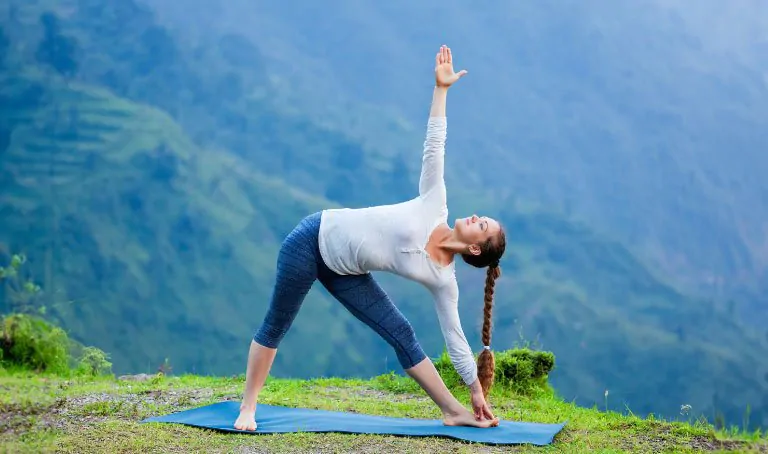
The 5 Big Benefits of Vinyasa Yoga
1. Functional Strength + Flexible Mobility
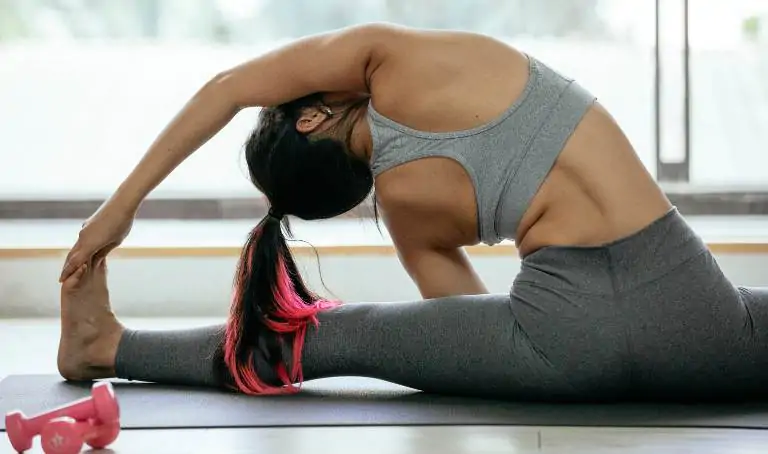
Repeated weight-bearing poses (e.g., Plank, Low Lunge, Warrior series) and active stretches develop useful strength while opening commonly tight areas (hips, hamstrings, thoracic spine). The result is more range of motion with control, which carries over to daily life and sports.
Do it today: Try 3 rounds of Sun Salutation A (Surya Namaskar A) at a conversational breathing pace.
2. Heart-Healthy Movement (Without a Treadmill)

Continuous, breath-paced sequences gently elevate heart rate into a light-to-moderate cardio zone for many practitioners. Over time, this supports cardiovascular endurance. Unlike steady-state cardio, Vinyasa also trains movement variability and postural muscles.
Coach’s tip: If your goal is conditioning, choose classes labeled Vinyasa/Power and flow at a steady rhythm you can maintain with nasal breathing.
3. Stress Down, Clarity Up
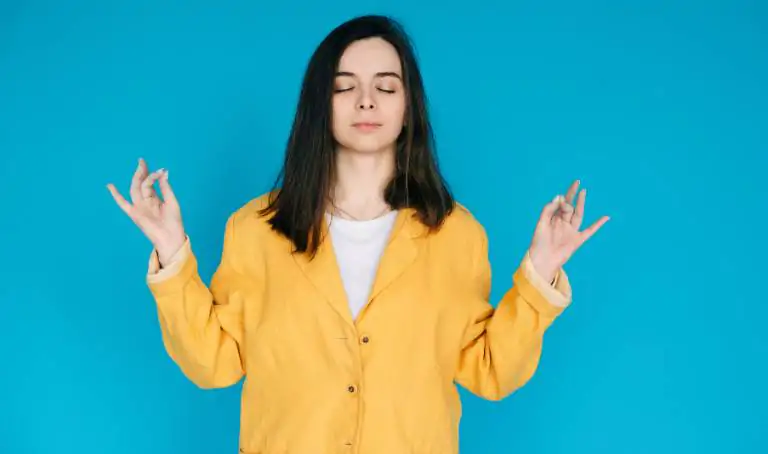
Vinyasa’s “moving meditation” pairs slow, controlled breathing with present-moment attention. This combination is consistently associated with lower perceived stress, improved mood, and better sleep for many people. Think of it as a nervous-system reset that you can finish in 20-30 minutes.
Try this cue: Inhales initiate upward or expansive actions; exhales power stabilizing or folding motions.
4. Support for Healthy Weight & Energy
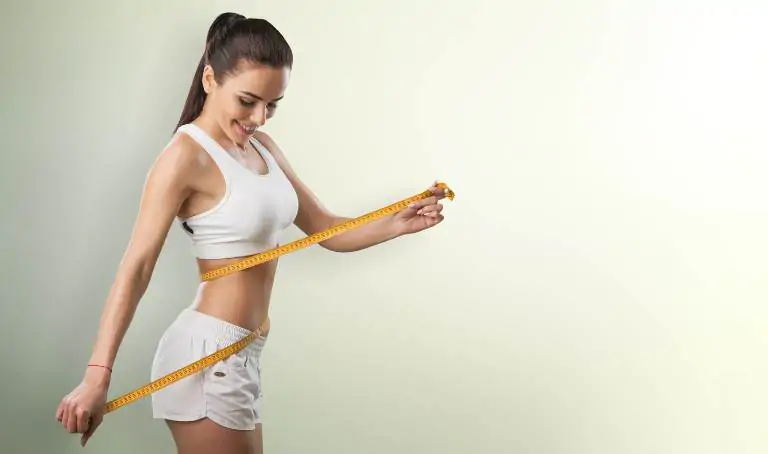
No miracle claims here. But flowing sequences add meaningful activity minutes, build lean mass, and can increase total daily energy expenditure, especially when practiced consistently. Twists and inversions also encourage circulation and lymph movement, supporting that “light, energized” feeling post-class.
Programming idea: 2-4 Vinyasa sessions/week + daily walks = realistic, sustainable activity plan.
5. A Stronger Mind-Body Connection (Fewer Niggles)

Linking breath to motion refines proprioception (your sense of position and movement). You’ll notice earlier when you’re compensating, which helps prevent overuse aches and improves balance. Over time, many practitioners report more confidence in their movement and posture.
Safety first: Pain ≠ progress. Modify or skip shapes that provoke sharp or pinching sensations.
Quick Comparison: Hatha vs. Vinyasa
| Feature | Hatha | Vinyasa |
| Pace | Slower; poses held | Continuous flow; variable pace |
| Focus | Alignment, foundations | Breath-linked transitions, rhythm |
| Cardio demand | Lower | Light–moderate (class-dependent) |
| Best for | Beginners, rehab, deep instruction | Movers wanting strength + flow |
A Safe 20-Minute Beginner Flow (Follow Your Breath)
- 2 min: Easy Seated Breathing (4-count inhale / 6-count exhale)
- 3 min: Cat–Cow → Thread the Needle (right/left)
- 5 min: Sun Salutation A × 3 rounds (rest as needed)
- 5 min: Low Lunge → Half Split (right/left), then Baby Cobra × 3
- 3 min: Supine Twist (right/left) → Happy Baby
- 2 min: Savasana (stillness)
Modifications: Use blocks under hands in lunge/half split; drop knees in Plank/Chaturanga; step instead of jump.
Who should be cautious?
- Acute wrist/shoulder issues (modify weight-bearing or use fists/forearms)
- Uncontrolled hypertension, glaucoma (use care with long inversions)
- Pregnancy (seek prenatal-informed guidance)
- New to exercise (start with slower flows or Hatha, build capacity)
Always consult a qualified professional if you have medical concerns.
Smart Practice Tips (2026 best practices)
- Progressive overload: Add time, rounds, or slightly slower, controlled eccentrics week-to-week.
- Breath test: You should be able to breathe through your nose and speak short sentences. If not, downshift.
- Recovery: Non-consecutive flow days; sprinkle in walking and mobility.
- Footwear & space: Barefoot on a non-slip mat with 360° clearance for safe transitions.
Conclusion
Vinyasa yoga is more than a workout, it’s a moving practice that builds strength, steadies the mind, and restores balance to daily life. Its blend of breath and motion supports heart health, flexibility, and mental clarity without the need for high-impact exercise. Whether you flow for twenty minutes or an hour, consistency matters most. A few mindful sessions each week can bring long-term calm, confidence, and vitality both on and off the mat.
FAQ’s
What is Vinyasa yoga?
A breath-linked style where poses flow continuously from one to the next. Sequences vary by teacher and can range from slow to athletic.
What is Power Vinyasa yoga?
A more athletic, strength-forward form of Vinyasa that uses longer holds, faster transitions, and heat-building sequences.
What is hot/warm Vinyasa yoga?
A Vinyasa class taught in a warmed or heated room. Heat can increase sweat and perceived intensity; hydrate and modify as needed.
Is Vinyasa yoga for beginners?
Yes, choose beginner/slow-flow classes, use props, and prioritize form over speed. Start with a few Hatha sessions if brand new.
What are the Vinyasa pose names in yoga?
Common shapes include Mountain (Tadasana), Plank, Chaturanga, Upward-Facing Dog, Downward-Facing Dog, Low Lunge, Warrior I/II, and Chair.
How many calories does Vinyasa yoga burn?
It varies by pace, heat, and body size. Many people see light–moderate calorie burn; focus on consistent practice over exact numbers.
What is the difference between Hatha and Vinyasa yoga?
Hatha holds poses with pauses (slower, instructional). Vinyasa links poses in continuous flow (more rhythmic/cardio).
Is Vinyasa yoga good for weight loss?
It can help as part of an overall routine, adding activity minutes, building lean strength, and supporting habits when done consistently.


